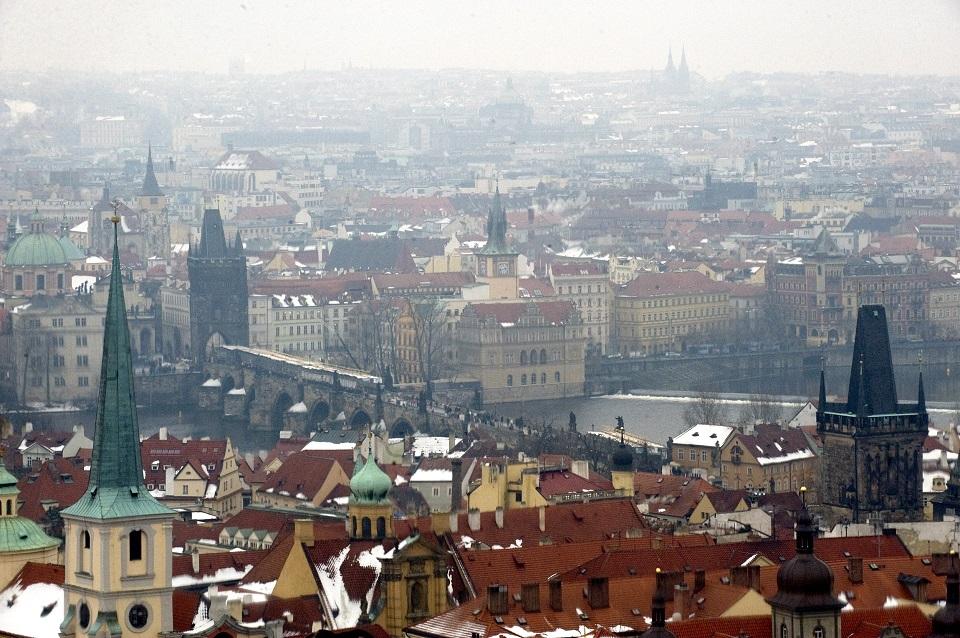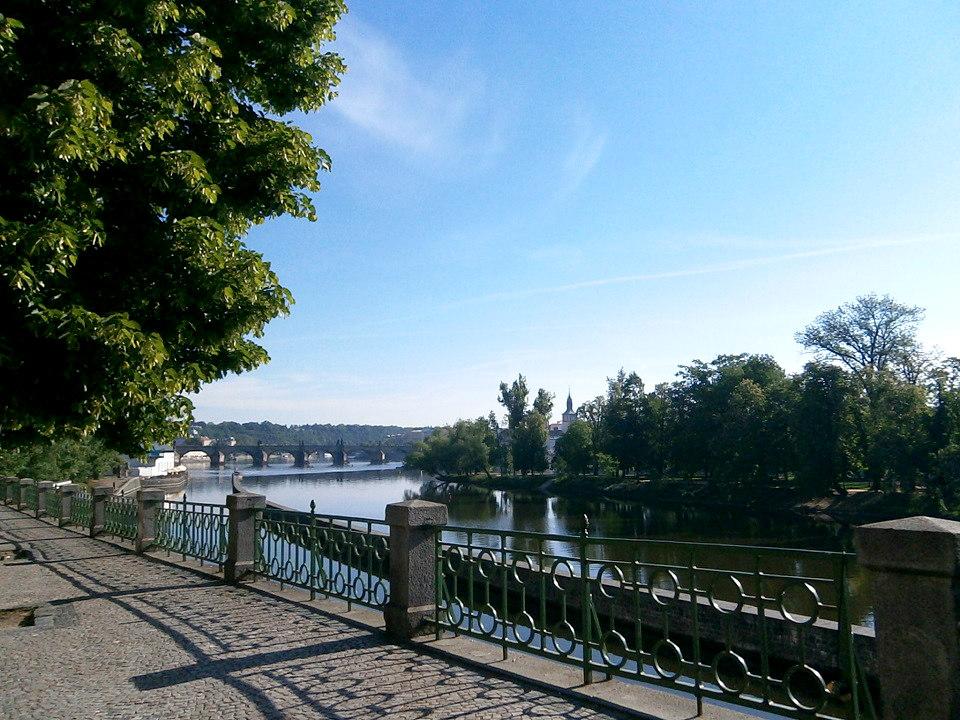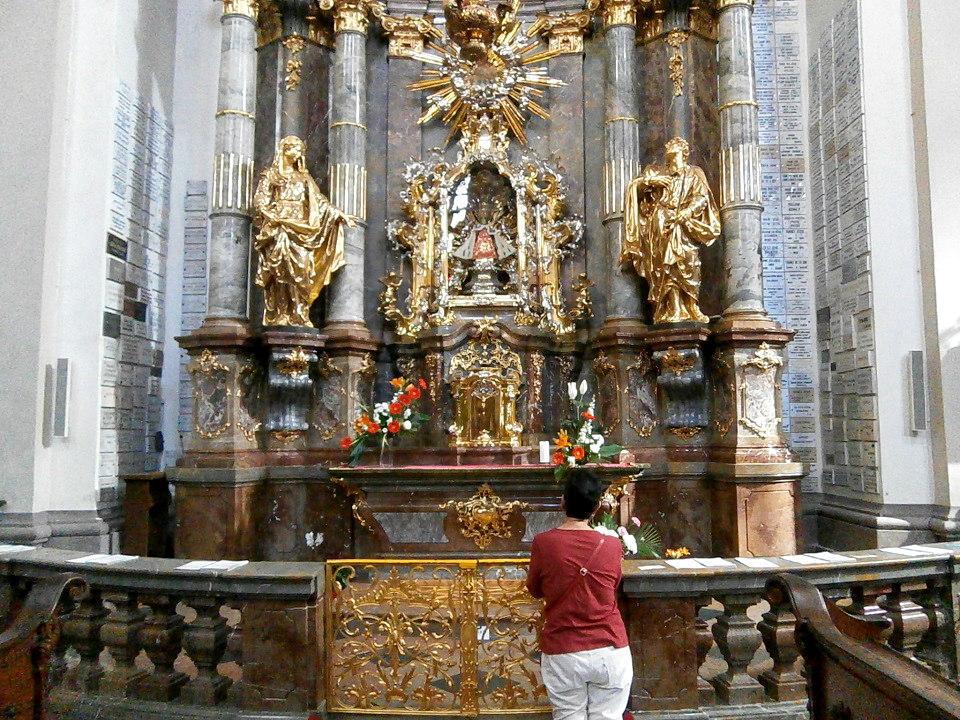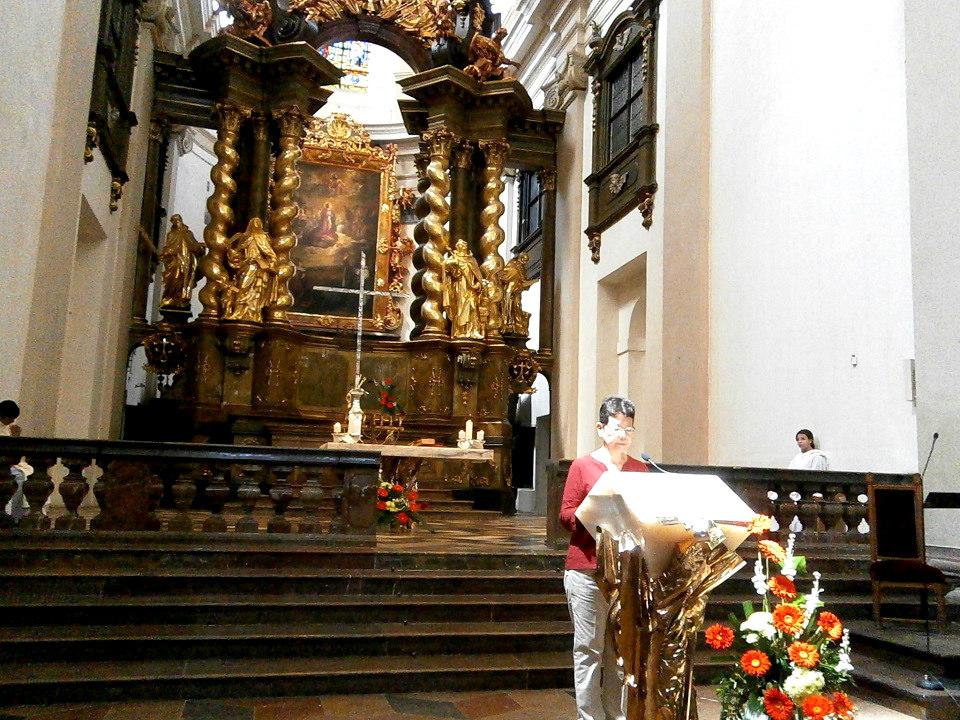A Trinity Sunday in Prague’s Malá Strana

The district of Malá Strana in the Czech capital of Prague is situated on the west bank of the Vlatava River, on the slopes below Prague Castle. Its name means “Lesser Town,” but there is certainly nothing lesser about it; within its wide confines are many historic landmarks.
One early May morning, my husband Alex and I set out to explore Malá Strana on foot, as it didn’t look too far away from where we were staying on Ostrovni Street.
It was a cool sunny day, and after a few minutes we were already in front of Most Legií (Legion Bridge), one of the many bridges that spanned the river.
Although not as popular as Charles Bridge, it had its own charm. Built in the turn of the 20th century, this granite bridge got its name from a legion of the Austro-Hungarian army that agitated for an independent Czechoslovakia during World War I.

Because it was early, Alex and I felt we had the place to ourselves, and a cool breeze was blowing from the river. Walking through the bridge with its old lampposts and handrails with graceful Art Nouveau and neo-Baroque touches, we noted two tall towers, which used to be toll places.
Across the water, the Charles Bridge was also quiet without its hordes of visitors. The bridge led us to Újezd Street, but before we reached it we passed by tranquil roads, and around the bend, I had to pause and take in the picturesque sight: to the right was Strelecký ostrov, an island on which were a cinema, restaurants, and a terraced café; at the center was Charles Bridge—and all were under a cerulean sky, with wisps of clouds auguring a clear day.

The thirty-minute walk along Újedz Road led us to Karmelitská, the street on which stands the Church of Our Lady Victorious, one of our important destinations on that Trinity Sunday.
The church was deserted except for an elderly lady in one of the side pews. To the right was a special altar, a wide, curved communicants’ kneeling rail in front of it. When we drew near, we couldn’t help but gasp.
Enthroned in gold leaf, guarded by marble pillars and golden statues, was Prague's own Sto. Niño: the world-renowned Child of Prague, one of the most iconic statues in our consciousness.

Gold decorations encircled the 16th-century figure, and it had its own tabernacle. The wax-covered wooden statue was about 48 centimeters tall, and on that day, it was dressed in a red dress with a white fur cape. It had a bejeweled crown, and on its left hand it held a gold Cross on a globe, while the right hand was lifted for a blessing.
I knelt down to say quiet prayers for loved ones, and offered heartfelt thanks for blessings received.
Recently, the Philippine Embassy in the Czech Republic also announced that a statue of the Sto. Niño de Cebu has been installed in another church in Prague. It is dressed in intricate barong and lace material, in full callado, designed by Ben Farrales.
The church's atmosphere was serene, perfect for contemplation. We learned that there was to be a noon Mass in English; since we were quite early, we decided to keep exploring and come back later.
We followed the road, passing by restaurants housed under graceful arches. Further on we reached a clearing, and the door to the magnificent St. Nicholas Church.
This 18th-century church is said to be the best example of Prague Baroque. It is full of frescoes, statues of saints in gold filigree, and a light-filled, 70-meter-high dome with a fresco painted on the ceiling. It also has a 79-meter-tall belfry affording a spectacular panoramic view. We needed time to take in all the beauty of this church, where Mozart’s Great Mass in C minor was first performed.

At 11:30 we hurried back to the Church of the Lady Victorious and sat in the front. Before long, an Asian lady came over and asked, “Ma’am, can you please read the First Reading and the Responsorial Psalm?” “Why, yes,” I answered, “I would be very happy to do so!”
So it came to be that on a Holy Trinity Sunday Mass, I found myself before the parishioners of the fully-packed church of the Child of Prague, sharing the readings. It was an emotional moment, as the Psalms were my favorite: “…What is man that you should be mindful of him, or the son of man that you should care for him?”

After Mass, the lady introduced herself as Susan—an Ilongga from Carles, married to Gusting, from Banate. Surprised to learn that I was also from Iloilo, we laughed and conversed in Hiligaynon, and she pulled me over to some of her Filipino friends, also active in church activities.
My memories of our trip to Prague will always be highlighted by meeting kababayans in this amazing church, participating in the readings during the Holy Trinity Mass, and discovering so many beautiful places in Malá Strana. — BM, GMA News



